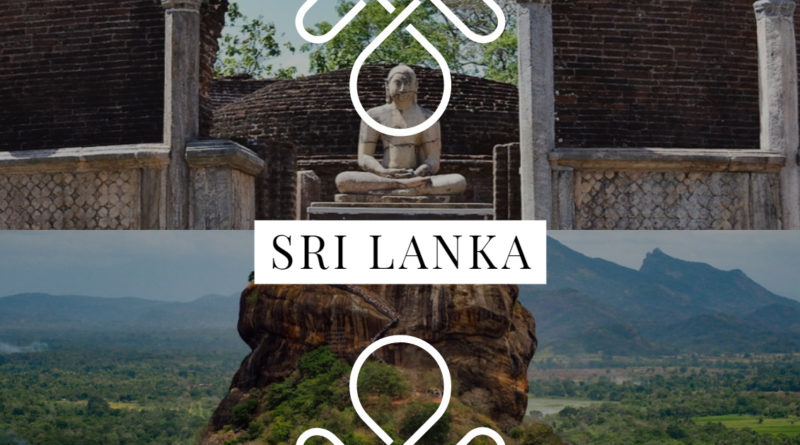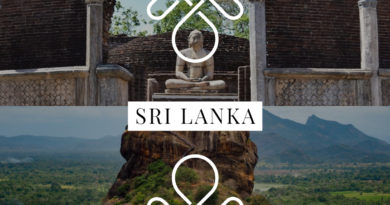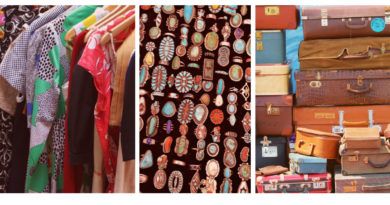Tourist attractions in Sri Lanka
National Park/Sanctuary
Sri Lanka is a heaven for animal lovers who enjoy animal or bird watching. The animals that wander the national parks and sanctuaries are variety. There are many sanctuaries and national parks in Sri Lanka that offer you an opportunity to observe real wildlife once in your lifetime. You can spot animals like are wild boars (pig), porcupines, elephants, deer and monkeys, leopards, sloth bears, wild buffalos, ant-eaters, civet cats, jackals, Loris (unique to Sri Lanka), mongooses, several varieties of reptiles lizards, squirrels, and amphibians.
Yala (Ruhuna) National Park
Yala National Park is known for its biggest, extensive the area of 1,259 sq km, and its best wildlife preservation in the country. The vegetation ranges from dense jungle to open parkland. Its terrain is varied from flat plains to rocky outcrops. There is also an abundance of water supply for animals and birds. The national park is divided into Yala East and Yala West (also called Ruhuna).
Yala West or Ruhuna National Park is recognized for the best Park in the world to observe and photograph leopards. There often claims to have the highest density of leopards than anywhere in the world. Tourists take a one-day jeep-safari trip through the Park although, but to cover the entire Park, you need to take atleast three days. The Park is usually closed at almost 7.00 pm.
Apart from leopards, there are a large number of elephants living inside the Park. Other animal living in the Park include spotted deer, barking deer, sloth bear, mouse deer, toque monkey, ruddy mongoose, stripe-necked mongoose, wild pig, marsh crocodile, jackal, water monitor, and estuarine crocodile.
Furthermore, 130 species of birds have been recorded here, they include Brown-capped Babbler, Sri Lanka Jungle Fowl, Stone Curlew, Black-necked Stork, Greater Thick-knee, Lesser Adjutant, Sirkeer Malkoha, Blue-faced Malkoha, Painted Stork, Green Bee-eater, Blue-faced Malkoha, Pompadour Green Pigeon, Green Bee-eater Orange-breasted Green Pigeon, Brahminya Myna Malabar Pied Hornbill, Rose-colored Starling, etc.
A large assortment of water birds also can be seen in the Yala East, which is 180 sq km in extent.
Gal Oya National Park
The Gal Oya National Park spread on an area of 260 sq km. It is famed to be surrounded by the Senanayake Samudra, the largest tank in Sri Lanka. This Park is most famous for its extraordinary elephant population. The best time to visit is between March and July when you can see about 150 elephants at one time. The natural way to enjoy the Park’s scenery is to take a boat trip, watching animals and birds on the shore.
Uda Walawe National Park
The Uda Walawe National Park covers area of approx. 30,821 hectares in the dry zone. This Park lies in the middle of the Park is the Uda Walawe Reservoir. It is largely inhabited by sambhar, water buffaloes, elephants, spotted deer, mongoose, bandicoots, crocodiles, wild boars, foxes, water monitor lizards, Toque Monkeys, leopards, Grey Langur, and 30 varieties of snakes.
Bird life includes Sri Lanka Jungle Fowl, Malabar Pied Hornbill, Sri Lanka Grey Hornbill, Wooly-necked Stork, White-bellied Sea Eagle, Black-headed Ibis, Black-shouldered Kite, Crested Serpent Eagle, Changeable Hawk Eagle, Blue-faced Malkoha and Shikrs, Sirkeer Malkoha.This Park has grasslands and thorn scrubs and many valuable species of trees especially teak.
Bird Sanctuary
Sri Lanka has reported more than 468 species of birds. It is believed that there are a total of 339 varieties of birds found in the country and a additional 129 species of migrant birds. Of which 26 species of the birds are native birds. A bird lover could expect to observe much as 230 species at any given time.
Kandalama Sanctuary
Kandalama offers one of the greatest bird-watching opportunities in the north-central province. The heterogeneity in environment and the tank provides the visitors the possibility to observe more than 145 species, which is almost a third of total number of birdlife in Sri Lanka. This population consists of the terrestrial, arboreal, and aquatic birds.
Bellanwila-Attidiya Bird Sanctuary
The santuary is a precious residual remnant of the once extensive marshlands around Colombo. It is of major significance as a wildlife refuge as well as a flood detention area for Colombo. It is rich in species and worth a stay.
Victoria Park
Set in Nuwaraeliya, it is an ornamental park in the heart of town that has gained a reputation for birds.
Udawattekale Sanctuary
Located in Kandy, which is a region of rainforest rich in species that have enjoyed protection from historical times
Hakgala Botanical Gardens
The most enjoyable place for bird watching, Hakgala Botanical Gardens are the significant fragment of elfin forest situated above the Hakgala Botanical Gardens.
Sinharaja Man And Biosphere Reserve
A world heritage site as 1988, this is possibly the most important site in Sri Lanka and is internationally important for its bio-diversity. The reserve embraces some of the few remaining sizeable tracts of undisturbed primary lowland rainforest.
Zoological Garden
Dehiwala Zoo
This is a standard Asian zoo located in Dehiwala 10 km south of the Fort, where the animals are well kept. The zoo has a wide collection of various animals, including a fine range of birds and an aquarium. The major attraction of this zoo is the elephant show.
National Zoological Garden
Located 11 km from the Fort – Colombo 1, the zoo has a fine collection of reptiles, animals, birds, and fish from all over the world. The aquarium displays over 500 species of aquatic life. Also walk through Reptilian, Aviary, and Butterfly Park to see another amazing world of wild animals.
Botanic Garden
Sri Lanka has three beautiful Botanic Gardens – Hakgala at an elevation of 1,680 meters, Peradeniya at an elevation of 488 meters, and Henarathgoda in the low country.
Pinnawela Elephant Orphanage
The orphanage for elephants has been set up by the Department of National Zoological Gardens, in 1975 at Pinnawela, 90 km from Colombo. Pinnawela Elephant Orphanage has the largest captive herd in the world. The elephant orphanage was set with seven orphans today has a population of plenty. It has become a significant tourist attraction because of its uniqueness. This is an exemplary site for research and education and photography, on elephants.
Museum
National Museum, Colombo
National Museum is housed in a colonial-era building on the Albert Crescent, is the best known for its collection of Sinhalese artwork (carvings, sculptures, and so on), china, and Ola manuscripts antique furniture, ancient royal regalia, etc. It includes the national treasures and art facts from all parts of the island. There is a section of Puppetry and Children’s Museum and a library and more than 4,000 ancient palm leaf manuscripts.
The National Maritime Museum, Galle
The Museum is located within the Fort of Galle. This Museum displays the fauna & flora of the sea and the environment. An interesting experimentation is the ‘walk-into-the sea’ diorama, presentation the natural coral beds, seagrass beds and deep-sea fishes. Finally, one leaves the Museum seeing the effects of sea pollution, coast erosion,etc.
Archaeological Museum
The Archaeological Department has set up Archaeological Site Museums in Mihintale, Isurumuniya, Anuradhapura (ancient city), Veheragala, Dedigama, Jaffna, Vavuniya, Kandy, Sigiriya, Yapahuwa, Panduwasnuwara, Matara (Star-Fort), Deegavapiya Kotte, and Kataragama. Photography requires permits.
Art Gallery
National Art Gallery
The National Art Gallery caters largely to the conservative taste in painting mostly portraits. There are also some irregular exhibitions of Sri Lanka artists.
Religious Places
Maligawila & Dambegoda
Maligawila is where two enormous Buddha statues stand. One of them is the 11m-high classical Buddha statue measures back to the 7th century AD that is deemed to be the world’s largest free standing Buddha figure. The statues are carved from crystalline limestone. In close proximity at Dambegoda is another 10m-high statue, Avalokitheswara Bodhisattva .
Temple of Tooth (Dalada Maligawa)
The Temple of Tooth hosts the most important part of Buddha relics, the sacred tooth of the Lord of Buddha. It is believed that the tooth was taken from the flames of Buddha’s funeral pyre in the year 543 BC and was smuggled to the island during the 4th century AD, hidden in the hair of princess. The relic was moved, up and down Sri Lanka from Anuradhapura, the first place, eventually to Kandy.
The Temple of Tooth construction started in 1687 and finished in 1782. The temple is an imposing pink-painted structure, surrounded by a deep moat. The octagonal column inside the moat was built to house the important selection of Ola (palm-leaf) manuscripts however this part was damaged by the 1998 bomb blast. People wearing shorts are not allowed to enter in this temple and shoes must be removed before entering.
Buduruwagala
Buduruwagala was named , With its meaning of ‘Buddha image’, after rock-cut Buddha statues carved on a mountain located in the area. This 7-statue network, which is of the Mahayana Buddha School, holds of the huge standing Buddha figures determined back to 8th – 10th centuries AD. The middle of three figures to Buddha’s right is considered to be the Buddhist mythological figure, the Avalokitheswara Bodhisattva.
Fascinating City
Kandy
Nestled in a hilly inland area, only 115 km from Colombo, Kandy is Sri Lanka’s second biggest and considered as a capital of the hill country. It was also a capital of Sinhalese kingdom that fell to British in 1815. The Kandy’s town and its countryside are fully lush and green. In the town center there are several old shops, antique and gem specialists, and bustling market. The focus of Kandy is its lake, with the Temple of Tooth, that lies on its north side. The city directly stands on the north and west of the lake, with a clock tower that is always catching your attention. Not far from the lake, train station, market, and various bus stands are in walking distance.
Ratnapura
Also known as the City of Gems, Ratnapura is 100 km south-east of Colombo and is famous for gems. The Gem Museum on the Pothgulvihara Mawatha, Getangama is a good display of gems as well as information on mining and polishing. Apart from gems, the scenery around the city is pretty; in fact, the place gives you the best position to view the Adam’s Peak since here you see it from below whereas at Hatton you see it from the same level.
Anuradhapura
The city, 250 km north of Colombo, is Sri Lanka’s first capital and is the most important and extensive Sri Lanka ancient city. It was a capital of Sinhalese kingdom for over 1,000 year since 380 BC. Most remnants of Sinhala civilization can still be seen in the city, mostly lying to the west and north of the modern town of the city. They are such as the Sacred Bo-Tree, the same kind of tree under which the Lord of Buddha achieved the enlightenment, and the Thuprama Dagoba, the oldest of many temples in the city which is believed to enshrine the collar-bone of the Lord Buddha, show the flourish of the Buddhism during Sinhalese kingdom; the remains of immense tank that was used in the ancient city’s irrigation system; and the leftover of the lake on the southeast f Anuradhapura which is dated back to the 11th to 12th century is still in a good state of repair.



